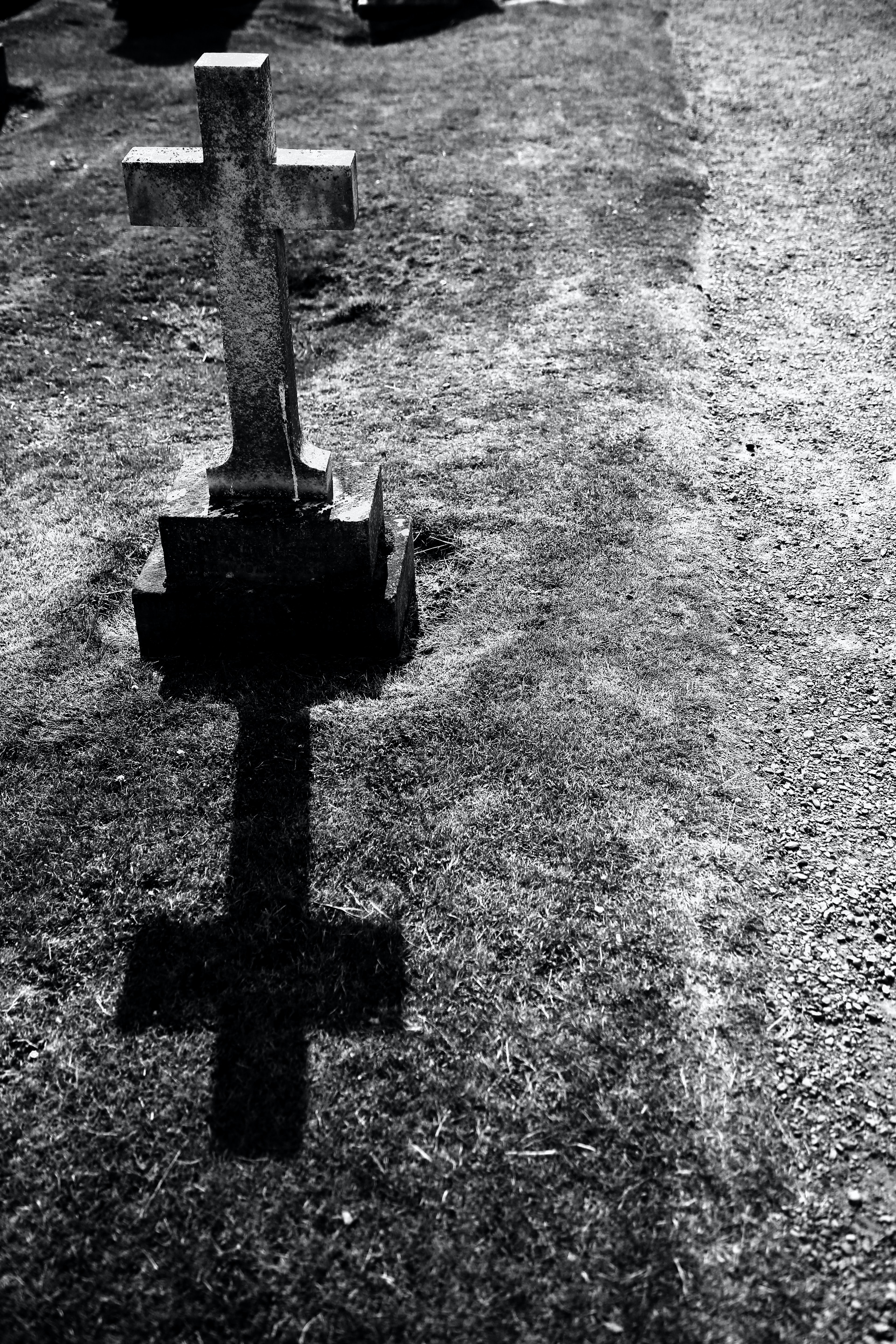Death is a scary thing. Even with all the medical advances and prescriptions that we are blessed with in the 21st century, we still fear death. Stories of people dying much too soon seem to take up news feeds and Facebook pages. Death is not something that most of us are comfortable with, and yet, the Church time and again wants to remind us of our death.
We have famous phrases from saints such as “Memento Mori”, which means “remember your death”, and we mark our foreheads with ashes to remember that we are dust. So why all this focus on death in the Catholic Faith? I think the biggest difference between the secular view of death and the Catholic view of death can be seen in today’s Second Reading. Paul is explicit that if we have been baptized into Christ’s life we are also baptized into his death. What does that mean? Didn’t Jesus come to give us life, not death?
If we look back all the way to Adam and Eve we can see clearly that one of the consequences of the first sin is human death. We will now have to die. This is a result of our first parents turning their backs on the eternal life that God offered to them. But thankfully, the story doesn’t end there. We have a God who is so good and loves us so deeply that he not only became one of us, but he went into the very deepest and darkest part of humanity, death, in order to make this same death the new gateway into eternal life. What started as a consequence of the fall has now become the way we attain heaven.
Jesus Christ became man and died, so that death itself could be resurrected. He conquered death so literally through his resurrection that death became for us the final necessary step to gain eternal happiness with God forever.
This is hard for us to grasp with human minds because we see death and evil and destruction all over the world and we cry out to God for help, but Paul is making the point that God has already won. Jesus took one of the worst consequences of the fall and entered into it so that we might have life and have it to the fullest. This is the good news of the Gospel. So while we are called to mourn loved ones who have passed, just as Jesus did with Lazarus, we can also have immense hope that death is the gateway between this world and the next and that if we have been baptized with Christ we have nothing to fear.
From all of us here at Diocesan, God bless!
La muerte es algo aterrador. Incluso con todos los avances médicos y recetas con las que somos bendecidos en el siglo XXI, todavía tenemos temor a la muerte. Las historias de personas que se mueren demasiado pronto parecen ocupar fuentes de noticias y páginas de Facebook. La muerte no es algo con lo que la mayoría de nosotros nos sintamos cómodos y, sin embargo, la Iglesia una y otra vez quiere recordarnos de nuestra muerte.
Tenemos frases célebres de santos como “Memento Mori”, que significa “recuerda tu muerte”, y nos marcamos la frente con ceniza para recordar que somos polvo. Entonces, ¿por qué nos enfocamos tanto en la muerte en la fe católica? Creo que la gran diferencia entre la visión secular de la muerte y la visión católica de la muerte se puede ver en la Segunda Lectura de hoy. Pablo es explícito en que si hemos sido bautizados en la vida de Cristo, también somos bautizados en su muerte. ¿Qué significa eso? Vino Jesús a darnos la vida, no la muerte ¿verdad?
Si miramos hacia atrás hasta Adán y Eva, podemos ver claramente que una de las consecuencias del primer pecado es la muerte humana. Ahora tendremos que morir. Este es el resultado de que nuestros primeros padres le dieron la espalda a la vida eterna que Dios les ofreció. Pero afortunadamente, la historia no termina ahí. Tenemos un Dios que es tan bueno y nos ama tan profundamente que no sólo se hizo uno de nosotros, sino que se adentró en lo más profundo y oscuro de la humanidad, la muerte, para hacer de esta misma muerte la nueva puerta de entrada a la vida eterna. Lo que comenzó como consecuencia de la caída ahora se ha convertido en la forma en que alcanzamos el cielo.
Jesucristo se hizo hombre y se murió, para que la muerte misma pudiera resucitar. Conquistó la muerte tan literalmente a través de su resurrección que la muerte se convirtió para nosotros en el último paso necesario para obtener la felicidad eterna con Dios para siempre.
Esto es difícil de entender para nosotros con la mente humana porque vemos muerte, maldad y destrucción en todo el mundo y clamamos a Dios por ayuda, pero Pablo está señalando que Dios ya ha ganado. Jesús tomó una de las peores consecuencias de la caída y entró en ella para que tuviéramos vida y la tuviéramos en plenitud. Esta es la buena noticia del Evangelio. Entonces, mientras estamos llamados a llorar a los seres queridos que han fallecido, tal como lo hizo Jesús con Lázaro, también podemos tener una inmensa esperanza de que la muerte es la puerta de entrada entre este mundo y el próximo y que si hemos sido bautizados con Cristo no tenemos nada que temer.
De parte de todos nosotros aquí en Diocesan, ¡Dios los bendiga!

Tommy Shultz is a Business Development Representative for Diocesan. In this role he is committed to bringing the best software to dioceses and parishes while helping them evangelize on the digital continent. Tommy has worked in various diocese and parish roles since his graduation from Franciscan University with a Theology degree. He hopes to use his skills in evangelization, marketing, and communications, to serve the Church and bring the Good News to all. His favorite quote comes from St. John Paul II, who said, “A person is an entity of a sort to which the only proper and adequate way to relate is love.”
Feature Image Credit: Fey Marin, unsplash.com/photos/IjaKTePIu60

